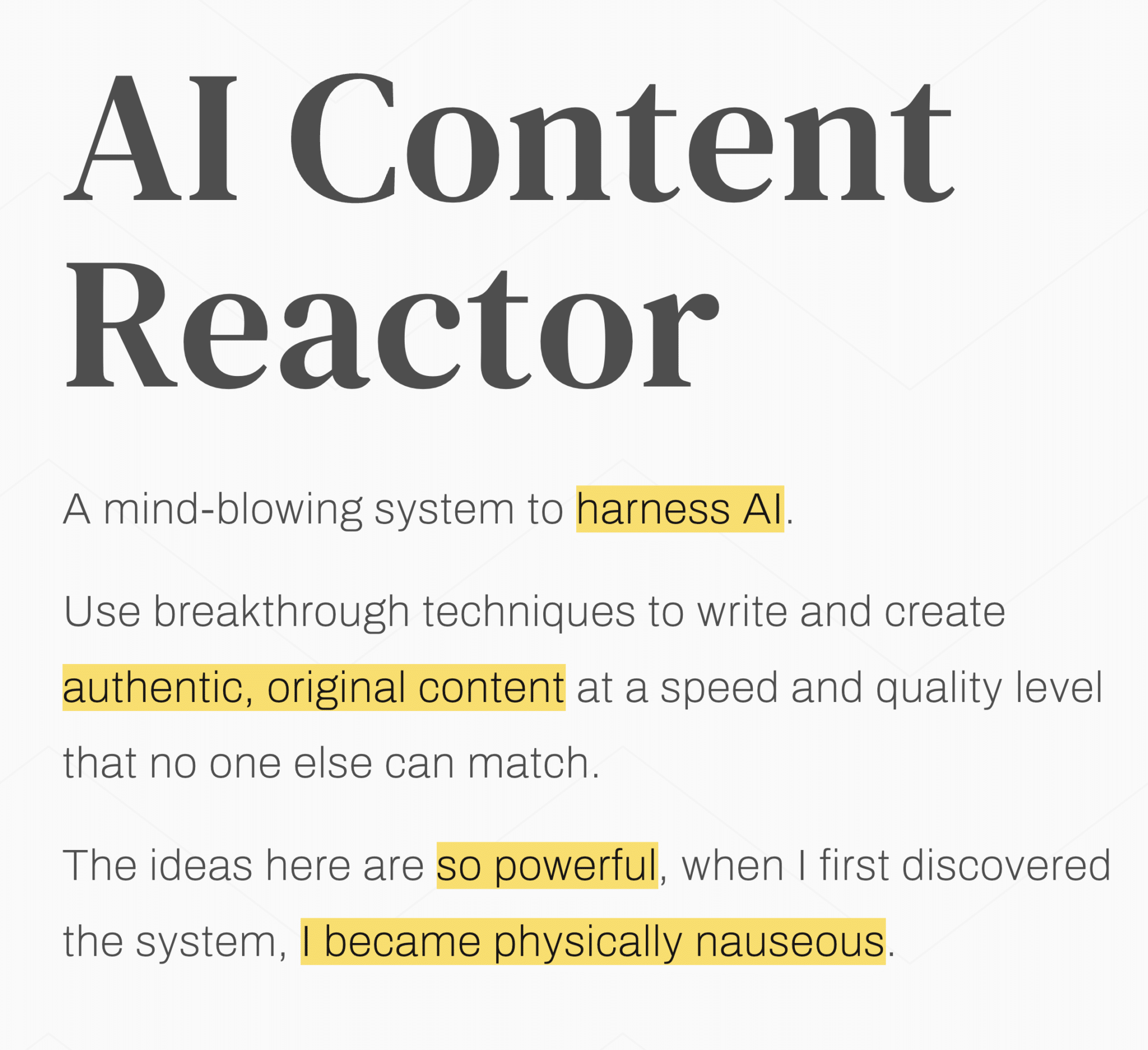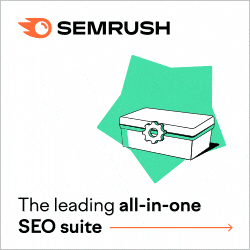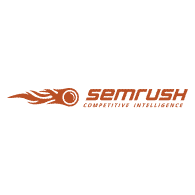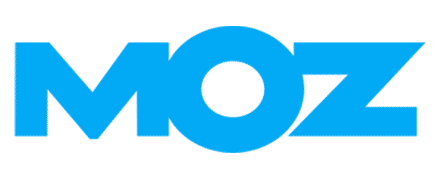When it comes to optimization, links have always been one of those things SEO agencies push (us included, I’m not pointing fingers). “You have to have good link equity,” we say. Article after article will tell you that link reputation is important. That having a healthy mix of internal and external links (in this case, I mean links coming into your site from external sources) is necessary.
But is it? It’s 2025, right? Is link equity or link reputation still even a thing now? For that matter, what do those words even mean?
The short answer is yes, they’re still a thing. However, it should be noted that they’re probably not as much of a thing as they were in 2014, for example. More on this at the end.
Let’s talk about it.
Table of contents
- What is link reputation?
- What is link equity?
- How do link reputation and link equity tie together for ranking and traffic?
- How do search engines evaluate link context and trust?
- Building a healthy backlink profile beats chasing sheer numbers.
- Practical ways to earn reputable links that pass equity.
- Let’s wrap it up.
What is link reputation?
Link reputation starts with trust signals from other sites.
When another website links to you, it’s doing more than pointing traffic your way. It’s putting its own credibility on the line. Search engines treat every link as a mini-vote. The weight of a site’s vote depends on the authority and relevance of the linking page, the anchor text it uses, and how many outbound links share its equity.
Stack enough trustworthy votes (AKA high-quality links) and you rank higher in search results. Stack the wrong ones and you look suspicious. That running balance of good, bad, and so-so votes determines link reputation.
Search engines weigh these link signals alongside supporting factors such as on-page quality and user experience (how fast your site is, mobile friendliness, if it’s secure, etc.). Taken together, those signals help algorithms decide whether your pages surface on page one or get buried.
A strong link reputation not only lifts your SEO performance but also reinforces brand credibility. People assume that if respected sites recommend you, you’re worth their attention. In short, good backlinks build both visibility and trust.
Where does “link reputation” fit in?
Third-party tools estimate this “off-site authority” with scores like Moz’s Domain Authority, Ahrefs’ Domain Rating, or SEMrush’s Authority Score, but those numbers are proxies, not actual ranking factors used by search engines like Google, Bing, Yandex, or Baidu.
Think of link reputation as the real-world concept that the tools are all trying to approximate. Each search engine maintains its own (secret) versions, factoring in:
- Link equity flowing into the domain and individual pages
- Spam or trust signals (e.g., unnatural anchor patterns, paid-link footprints)
- Topical proximity between linking and linked pages
- Entity-level authority (is this brand widely cited on authoritative sites?)
Your goal is to improve that genuine search-engine perception. Vendor metrics (Domain Authority, DR, Authority Score) are simply handy thermometers, not the thermostat.
What is link equity?
Link equity explains why some votes matter more than others.
Link equity is the “power” a single hyperlink passes from one page to another. Think of it as water flowing through a pipe. The more authority and relevance the linking page has, the wider the pipe and the greater the flow.
Search engines look at three core ingredients when they decide how much equity a link delivers:
- Authority of the linking page: One high-authority backlink can outweigh dozens of low-quality ones. A well-trusted page (say, an established trade journal) starts with more equity to give away than a brand-new blog post.
- Relevance and anchor text: Descriptive, varied anchors beat keyword stuffing or “click here.” When the clickable words (“anchor text”) match the topic of both pages, the link acts like a crystal-clear vote on that exact subject. For example, a gardening blog linking with the words “organic lawn-care guide” is a stronger, clearer signal than “click here” from an unrelated cryptocurrency site.
- How many outbound links are on the page: Equity is shared. Links buried in giant resource lists carry only a trickle of equity. If a page points to 100 sites, each gets a much thinner slice than if it pointed to five.
Why does anchor text matter?
The clickable words act like a label on the vote. Keyword-rich anchors add context, helping search engines confirm what the destination page is about. Over-doing the same keyword, however, is a bright-red spam flag, so mix branded, naked-URL, and descriptive anchors.
Once equity arrives at your site, internal links decide where it travels next. A tidy site architecture, where cornerstone or pillar pages link to supporting articles and vice-versa, lets you channel that equity toward the URLs that matter for conversions or awareness. A messy web of orphaned pages with no inbound or outbound links, on the other hand, lets valuable equity leak away.
How do link reputation and link equity tie together for ranking and traffic?
When you zoom out, link equity and link reputation behave a bit like water pressure and a neighborhood’s overall water quality. Equity is the pressure inside each pipe, or how much “push” a single link can send to a page. Reputation is the running grade inspectors assign to your entire water system as an indicator of whether the network of pipes consistently delivers clean, reliable flow.
Search engines look at both: they follow the pressure from individual links to understand which pages deserve to surface, and they check the system-wide grade to be sure those pages belong in a trusted neighborhood at all. Get the two working together, and you move past isolated ranking bumps; you create a steady stream of qualified traffic that reaches every high-priority URL on your site.
How do search engines evaluate link context and trust?
Google, Bing, Baidu, and others all weigh context alongside raw authority. They look at:
- Topical similarity between the two sites.
- Neighborhood quality: Are your link partners frequently cited by other trusted domains?
- Historical patterns: Steady, organic growth looks natural; sudden spikes from unrelated forums do not.
- Link placement: Editorial links inside body copy carry more weight than footers, sidebars, or ads.
If those signals line up, the link is considered trustworthy and passes its full equity. If they clash, search engines discount, or in extreme cases ignore, the vote.
Internal links decide where your earned equity flows.
There are two types of links: internal and external. An external link crosses domain lines. It can point outward from your site to another domain, or inward from another domain to yours (what we usually call a backlink). External links are the main way search engines gauge trust and topical authority across the wider web.
An internal link keeps the visitor on your site. A link to another post, a category page, or a money page is an example of an internal link. These links shape site architecture and shuttle the link equity you’ve already earned to the pages that matter most.
In other words, external links inject authority; internal links distribute it. Here’s how you build a clear architecture to make sure authority is flowing like it should across your site:
- Give every important page at least two contextual internal links.
- Use varied, descriptive anchors (“pricing guide,” “content development FAQs”) to reinforce page topics.
- Keep the crawl depth shallow. Three clicks or fewer from home to money pages is a good rule of thumb. This way, equity doesn’t leak away in a maze of orphan pages.
Anchor-diversity best practices keep your backlink profile natural.
Strive for a healthy anchor-text mix rather than letting a single pattern dominate. A practical rule of thumb is to keep roughly 40 percent of your backlinks branded (using your company or product name), about 30 percent made up of natural, non-keyword phrases such as “learn more” or “this study,” another 20 percent containing topical keywords, and the remaining 10 percent as plain, “naked” URLs.
If you’re practicing internal link building (and you should be, it’s important), don’t let all that variety funnel to just one spot. Spread those links across high-value guides, data studies, and key conversion pages instead of directing everything to your home page. This distributes link equity where it can do the most good.
Finally, revisit older backlinks whenever you update a flagship resource. A polite outreach email asking partners to swap a dated anchor like “2019 report” for the fresh “2025 report” keeps your anchor text accurate, maintains relevance, and signals to search engines that your content is current.
Building a healthy backlink profile beats chasing sheer numbers.
A beginner mistake is to count links like trading cards. Search engines care less about the number of links and more about the pattern they form – your backlink profile. A healthy profile shows:
- Steady growth like a staircase, not a cardiogram.
- Quality domain diversity, which provides dozens of unique, relevant, high authority websites, not 200 links from one blogger’s sidebar network.
- A natural anchor mix. No single phrase should dominate the chart.
- Normal follow / no-follow balance. A sprinkle of no-follow and user-generated links is healthy.
What are the warning signs of poor link reputation (and what can you do about it)?
Some link-building efforts just don’t have an effect. Others can get you in trouble. So what should you look for? And what can you do about it if you find any? Here are a few signs to look for:
Spam-heavy anchor text (e.g., “best cheapviagra”).
- Why it hurts: Signals paid or automated link schemes and trips spam filters.
- Quick fix: Disavow the links in Search Console or contact the site owner to request removal.
Backlinks from low-authority, off-topic domains.
- Why it hurts: Links with no topical relevance pass little equity and can erode trust.
- Quick fix: Refocus your outreach on reputable, niche-relevant sites that share your subject matter.
Sudden bursts of forum profile links or comment spam.
- Why it hurts: An unnatural spike looks manufactured and may trigger algorithmic scrutiny.
- Quick fix: Run a toxicity audit (e.g., with SEMRush or a similar program) to identify the spammy sources, then remove or disavow them.
Site-wide footer links stuffed with keyword anchors.
- Why it hurts: Passes minimal equity and can be interpreted as manipulative, risking penalties.
- Quick fix: Replace the keyword-rich text with a branded anchor or remove the link entirely so it functions as a legitimate credit rather than an SEO shortcut.
The best way to make sure the quality of links pointing to your site stays consistent is to let them happen naturally. However, there are ways that you can earn reputable links.
Practical ways to earn reputable links that pass equity.
- Publish link-worthy resources: Original data studies, in-depth guides, free tools.
- Offer expert quotes: Answer journalist queries on platforms like HARO; one placement on a national news site can pass more equity than dozens of directory links.
- Host or guest on webinars/podcasts: Show-notes pages often include followed links with branded anchors.
- Refresh and repitch evergreen content: Update stats, improve graphics, then notify past sharers.
- Run lightweight digital PR stunts: Small regional data pieces or charity tie-ins attract both press and local links.
What does “good” look like in SEMRush and Google Search Console?
- Semrush Authority Score: 30–40 is solid for a small brand; 50+ shows strong PR or content wins.
- Referring Domains graph: Gradual upward slope = natural. Sharp spikes warrant investigation.
- Toxicity Score: Keep below 45; review anything higher.
- GSC Top linking sites: Industry blogs, suppliers, or local press should dominate instead of random .xyz domains (although there will be some of those, as well).
- Top linked pages: Cornerstone guides and service pages, not just “/blog/hello-world”.
A brief look at Google, Bing, Baidu, and Yandex in 2025.
Over the past decade, every major engine has broadened its ranking recipe, so link reputation (and the equity that comes with it) no longer sits on the same pedestal it held in the mid-2010s. Backlinks still matter (no credible SEO can ignore backlinks), but standout content, clear entity signals, and solid page-experience metrics now outweigh sheer link volume.
Google’s Gary Illyes confirmed in 2023 that links “haven’t been a top-three ranking factor for some time.” Good, relevant backlinks remain the strongest off-site trust signal, but content helpfulness, author/entity credibility, and page-experience metrics outweigh sheer link profile size. Earn a handful of authoritative, topically aligned links for each key asset, then invest the majority of effort in standout content and solid UX.
Bing still values authoritative backlinks, yet it cross-checks them against engagement signals such as click-through rate and dwell time. If users bounce, the link’s boost fades. Combine quality link acquisition with compelling titles and rich SERP snippets to satisfy Bing’s engagement layer.
After years of fighting link-selling, Baidu puts heavier emphasis on site quality and brand trust. Even so, high-authority, in-country backlinks still carry meaningful weight (e.g., .gov.cn, major news portals). Especially when the anchor text is natural Mandarin and the domain isn’t part of a known link network. Secure a small portfolio of reputable Chinese-language links to reinforce brand legitimacy, but don’t rely on bulk link building to move the needle.
The 2023 source-code leak showed hundreds of link factors for Yandex, but 2025 guidance notes heavier weighting on behavioral and local signals (dwell time, .ru domains, server location). Links support rankings; they don’t drive them alone. Build a lean set of reputable Russian-language links, then optimize for local relevance and on-site engagement to win Yandex traffic.
Let’s wrap it up.
Backlinks are no longer the single biggest lever, yet they remain essential support beams. Build a concise set of high-quality, contextually relevant links, keep your anchor mix natural, and you’ll satisfy Google’s PageRank checks, Bing’s engagement filters, and Baidu’s stricter trust signals without treating link counts as the whole game.
If your link profile is missing, spammy, or you just need to grow it, high-quality content is the best way to get the job done. We’re here for that. With more than 60 years of combined optimization, marketing, and content development experience, our team has the acumen to help your business grow. When you’re ready to level up your business, contact Level343.



































